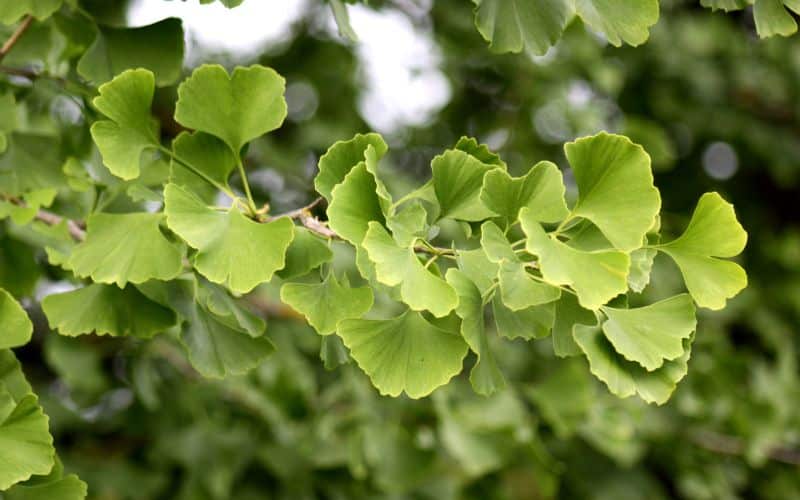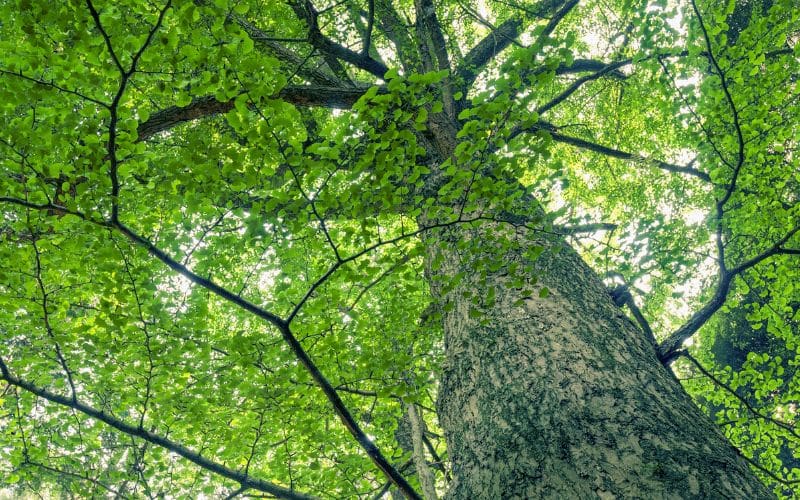
The Ginkgo tree, also known as Ginkgo Biloba or the Maidenhair Tree, is a marvel of nature that transcends time. Often referred to as a living fossil, its existence can be traced back over 270 million years, making it one of the oldest tree species on Earth.
In Ontario, the Ginkgo tree holds a unique place in natural history. Fossil records discovered in the region reveal that this tree was once indigenous here, leading some to argue that it could even be considered native to Ontario. This connection to the ancient world is not just a scientific curiosity; it’s a symbol of endurance, adaptability, and timelessness.
The Ginkgo’s ancient lineage is not merely confined to textbooks and museums. It continues to thrive in our modern world, a living testament to its resilience. In many Asian cultures, particularly in China and Japan, the Ginkgo tree is considered sacred and has been cultivated for centuries, especially in the grounds of temples.
Whether admired for its beautiful fan-shaped leaves, its medicinal properties, or its spiritual significance, the Ginkgo tree’s rich history continues to fascinate botanists, historians, and tree lovers alike. Its presence in Ontario is a reminder of the deep and enduring connection between the past and the present, a bridge between ancient landscapes and our contemporary gardens.

Growth and Appearance
Form and Texture
The Ginkgo tree is known for its variable form at any age, irregular when young, aging to an open pyramid. While slow to grow when young, with advancing age, the Ginkgo becomes a striking tree with an interesting winter form and even more fascinating foliage. It can grow to a height of 15-25 meters.
Leaves and Flowers
The leaves of the Ginkgo tree are alternate, simple, lobed, bright green, turning bright yellow before dropping in fall. The flowers are fragrant, inconspicuous, and dioecious, meaning there are separate male and female trees. Flowers will not appear until the trees are older than 20 to 40 years.
Fruit
Female Ginkgo trees produce small, fleshy, and smelly fruit. Washing off the smelly outer flesh reveals a delicious nut prized by many in Asia. Fruitless, male cultivars are available in numerous shapes and sizes.
Planting and Care
The Ginkgo tree, with its remarkable adaptability and resilience, is a low-maintenance addition to any landscape. Here’s a closer look at what makes this tree so accommodating and how to care for it:
Tolerance to Urban Conditions
Ginkgo trees are renowned for their ability to thrive in urban environments. They are impervious to pollution and can withstand the harsh conditions often found in city landscapes. This makes them an excellent choice for street trees, boulevards, and buffer strips.
Sunlight and Soil Preferences
These trees are versatile when it comes to sunlight, flourishing in full sun to part shade. They are equally adaptable to soil conditions, tolerating all soil textures from sandy to clayey. They can grow in a wide range of soil pH levels, from acidic to alkaline, making them suitable for various landscapes.
Drought and Salt Tolerance
Ginkgo trees are known for their ability to endure very dry soils, making them a suitable choice for areas prone to drought. They are also moderately tolerant of deicing salt, a quality that adds to their suitability for urban planting.
Pest Resistance
One of the standout features of the Ginkgo tree is its resistance to pests. Virtually pest-free, this tree does not suffer from the common ailments that plague many other species. This characteristic contributes to its longevity and robustness.
Transplanting and Recovery
Ginkgo trees can be easily transplanted, and their recovery is quicker with adequate irrigation and fertility. This ease of transplantation adds to their appeal for landscapers and garden enthusiasts.

Cultural Significance
The Maidenhair tree is sacred according to the Buddhist religion and has been cultivated for many centuries in China and Japan, especially in the grounds of temples. Its virtues are well-known, and despite the messy and stinky fruits, it’s considered a sound investment that can be planted with confidence for the long term.
Conclusion
The Ginkgo tree in Ontario is a species that transcends time. Its ancient lineage, unique appearance, adaptability, and cultural significance make it a tree worth planting for future generations. Whether you’re considering adding one to your landscape or simply admiring its golden leaves in the fall, the Ginkgo tree is truly a treasure of Ontario’s landscape.








